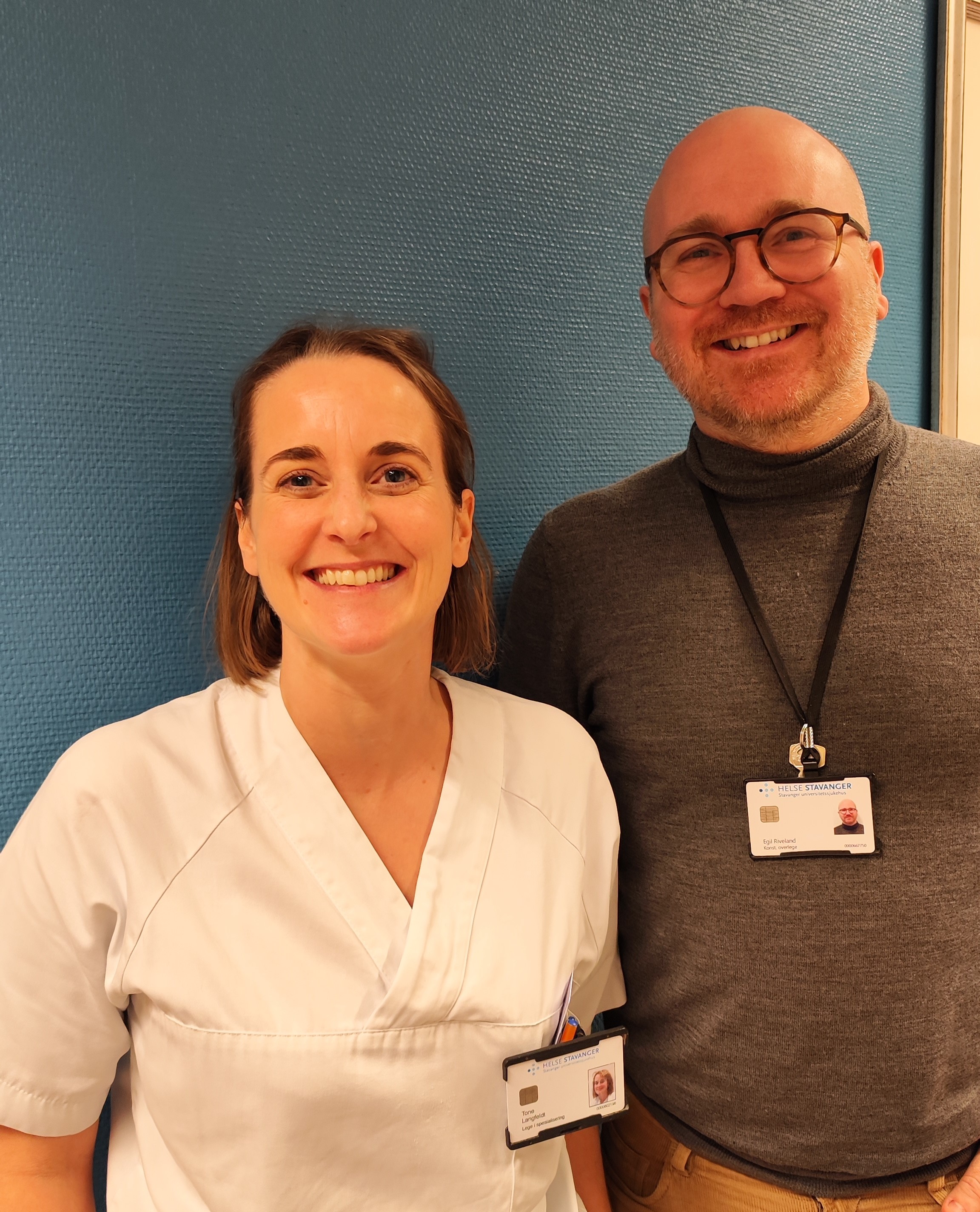Doctors and surgeons from Stavanger University Hospital participate in the eHealth @ Hospital-2-Home project. This blog post features insights from two of these professionals, shedding light on their roles within the project and the motivation behind their involvement.

The eHealth @ Hospital-2-Home project is a nurse lead study, which is testing the specifically designed nurse assisted digital intervention which is focused around remote patient monitoring. Like a lot of research projects, the team which supports the research is broad and includes people from multiple academic and clinical backgrounds.
At Stavanger University Hospital, there are doctors and surgeons who are supporting this project. Two of them, Egil Aarstad Riveland and Tone Langfeldt are cardiologist’s at the hospital and shared about their role in the project and motivation for being involved.
Why this research project?
When approached to support the research project, both Egil and Tone could see the potential of the project and how it might help improve healthcare services for people with heart failure. It is a recognized problem in heart failure that when someone is discharged from a hospital there is a high risk that they will be re-admitted. After learning about this project, they wanted to get involved as they thought it might offer a practical solution to being able to better support patients during the transition from hospital to home.
Egil, shared how his personal experience with a family member with heart failure, further motivated him. He noticed that his family member benefited from his expertise in helping to support and manage the complex treatment burden that comes with the chronic illness. He saw in the eHealth@H2H project the possibility of being able to upscale that level of support to more people with heart failure.
I am my [family members’] hotline if anything changes with their symptoms or treatment. I believe that this personal hotline helps to keep my [family member] away from the hospital. I was curious if this project would be similar for other patients and am looking forward to finding out the results.
What does research involvement look like in the eHealth@H2H project?
Their main involvement in the study is in setting the personalised clinical parameters for each participant into the intervention platform (built and supported by Dignio. The parameters are part of a formula that rates the participants health status that then prioritises how quickly (or if) the nurse navigator will contact the participant if clinically indicated. You can read more about two of the six nurse navigators in a previous blog.
While there was a bit of a learning curve at the beginning of the project about how these levels should be set. Together with the other doctors supporting the eHealth@H2H project they discuss and mentor each other in this process. They compared their experience of this intervention with clinically established remote monitoring devices (like pacemakers). While the systems fill very different clinical purposes, they both spoke about two advantages this remote patient monitoring intervention brings them as clinicians: 1) the ability to personalise the alarms, and 2) its supportive role in keeping people out of the hospital.
The beauty of this system is it allows for personalization, it allows you as a clinician to set the parameters to match the patients normal rather than forcing a patient to fit into the text book normal. This decreases the work that the nurses have to do in the monitoring of the participants.
Through their experiences in the research project so far (8 months into recruitment), they have personally observed that the system helps to support the patients without causing them to become hypervigilant. But it is too early yet, to understand the impact of the intervention on patients or the clinical pathway.
What does the future hold?
Tone and Egil have seen how the nurses who are involved in the project have grown in their competence and confidence in the remote monitoring and management of the participants in the study. While they are always available to support the nurses, they have noted that as time progresses there is less need for the nurses to consult them. Together with the other members of the research team, they are working hard to complete the study (recruitment and data collection) to enable reporting the results. They are looking forward to discovering if their personal experiences will be reflected in the outcomes of the study.
Read more about the project:
Protocols:
Literature Reviews:
Intervention design: